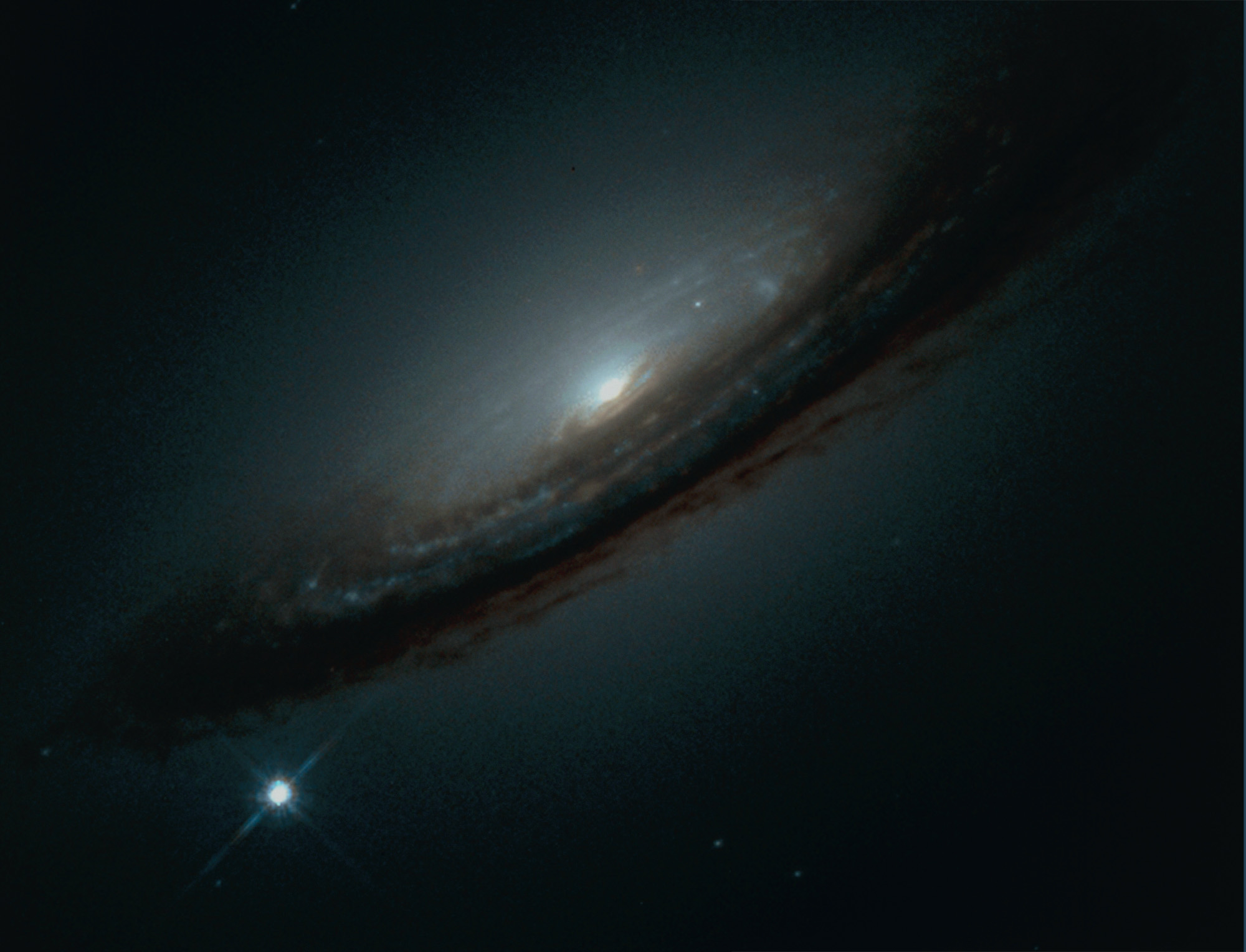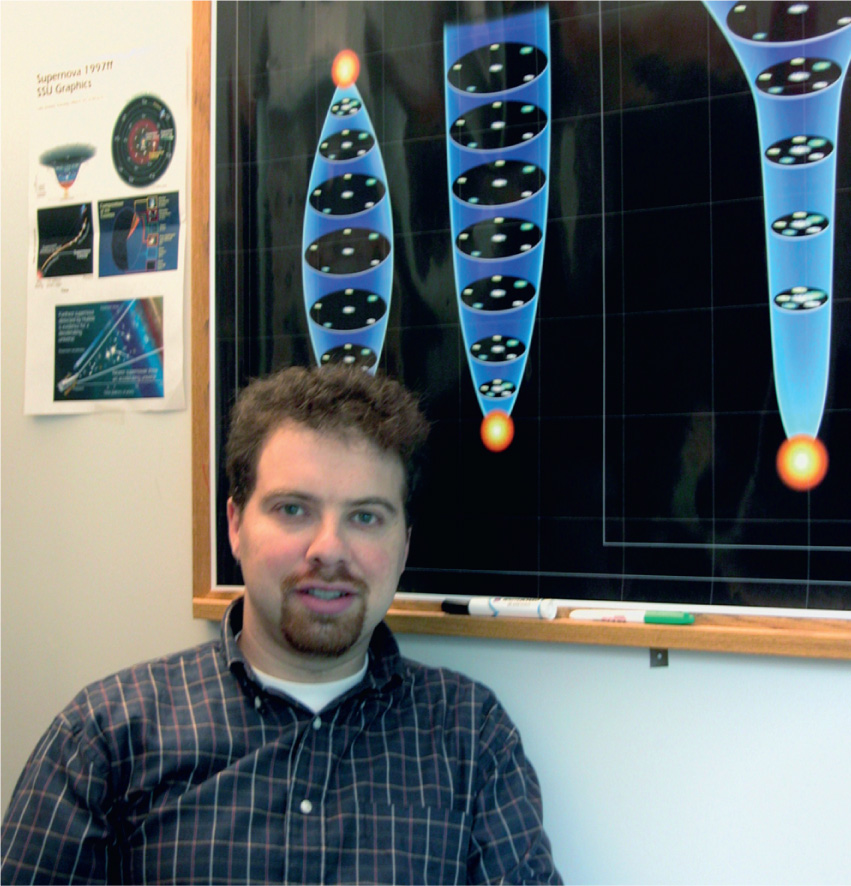
This image of a supernova (lower left) in the galaxy NGC 4526 shows a single star briefly shining as brightly as all the other stars in its parent galaxy put together.
In the 1990s, two teams were mapping the expanding Universe by studying light from the exploding stars known as supernovae, observed in distant galaxies. A particular class of supernovae, part of a family known as SN 1a, are very useful for this work because they all reach the same maximum brightness during the course of the explosion. So if astronomers can measure the brightness of a distant supernova, they can work out how far away the galaxy it resides in is, in the same way that measurements of the brightness of Cepheids established that spiral nebulae are galaxies beyond the Milky Way and that the Universe is expanding (see here).
This was very difficult work, pushing the technology to the limit. On average, about two supernovae go off in a galaxy every thousand years, so you need to look at 50,000 galaxies to detect about a hundred supernovae each year. By repeatedly photographing dozens of patches of sky, each containing hundreds of very faint galaxies, the teams hoped to find a handful of supernovae each year. By comparing the peak brightness of these supernovae with the redshifts of their host galaxies, they intended to measure the rate at which the expansion of the Universe is slowing down as gravity tries to halt the expansion that started with the Big Bang. Because light takes a finite time to travel across the Universe, by looking at distant galaxies astronomers are looking back into the past, seeing how the Universe has changed as time passes.
To their surprise, the two teams independently discovered something odd. For very faint galaxies (that is, very distant galaxies), the distances calculated from the observations did not quite match their expectations. The supernovae were a little bit too faint, according to the standard redshift-distance rule. This meant one of two things. Either the distant supernovae really were fainter than their nearer cousins, or they were further away than their redshifts implied. If they were further away, it meant that the Universe had expanded more than anticipated – that the expansion is speeding up, not slowing down. Something must be pushing against gravity.

There is no reason to think that the distant supernovae are any different from their nearby cousins, but although popular reports suggested that cosmology had been shaken to its foundations by the discovery, in fact cosmologists had a natural explanation for the source of the force that is making the Universe expand faster. When Albert Einstein used his general theory of relativity to develop equations that describe the nature of the Universe at large, he included a term known as the cosmological constant, which is a measure of the energy of empty space. This number had traditionally been set as zero, as it did not seem to be needed. But if it had a small value, that would mean that every cubic centimetre of space has the same amount of what has become known as dark energy. Dark energy contributes a kind of springiness to space, pushing outwards against the force of gravity.
Just after the Big Bang, although the Universe was expanding, gravity was slowing the expansion down. At that time, the outward urge of dark energy was too small to have much effect. But as the Universe expanded, there were more cubic centimetres of space, so there was more dark energy. At the same time, the gravitational pull of galaxies on each other got weaker as they moved apart. So there came a time when the outward urge from dark energy became bigger than the inward tug of gravity, and the expansion began to accelerate. The supernova results were announced in 1998, and quickly explained in this way in terms of dark energy. Since then, studies of even fainter supernovae – indicating more distant objects seen longer ago in time – have confirmed that when the Universe was younger the expansion was indeed slowing down.
One of the two teams who made the discovery was led by Brian Schmidt and Adam Riess, the other by Saul Perlmutter. In 2011 the three of them shared the Nobel Prize in Physics ‘for the discovery of the accelerating expansion of the Universe through observations of distant supernovae’. As Perlmutter said in an interview with the BBC, ‘The two groups announced their results within just weeks of each other and they agreed so closely; that’s one of the things that made it possible for the scientific community to accept the result so quickly.’

But each team involved dozens of researchers working at various places around the world. It is now thought that dark energy makes up at least two-thirds of the mass-energy of the Universe (see here). Finding out more about dark energy and its implications for the fate of the Universe is now a key area of cosmological research.